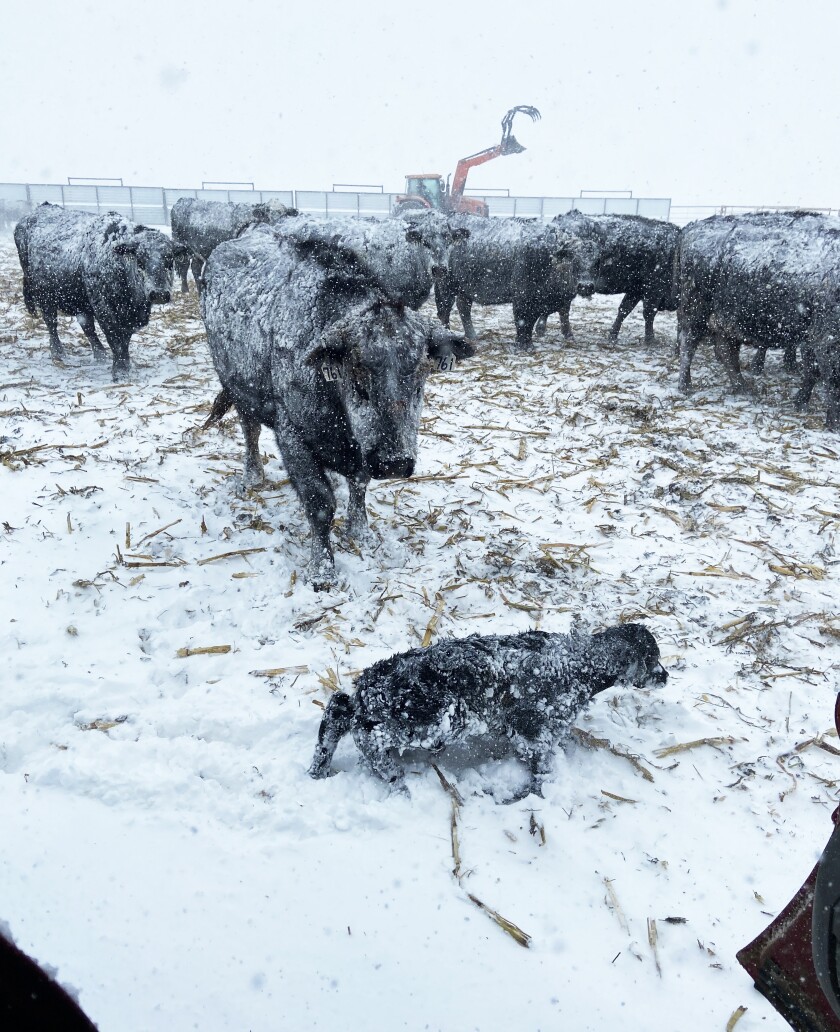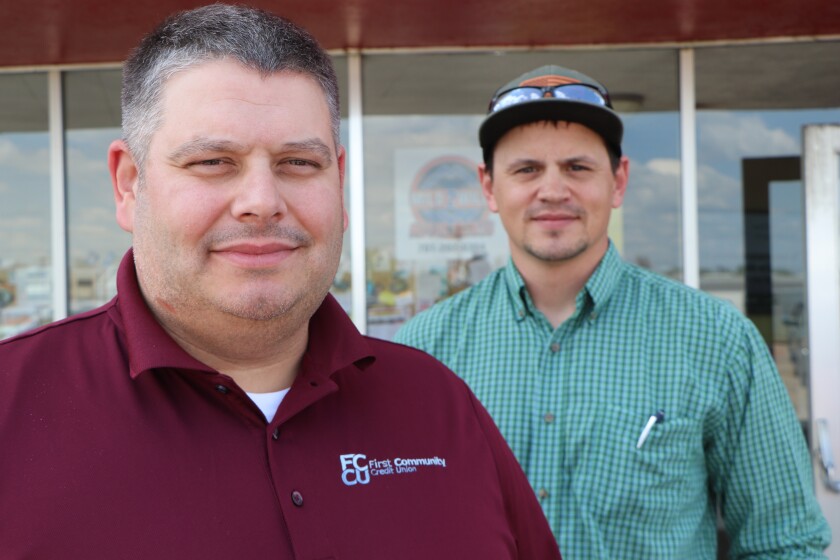BISMARCK, N.D. — Julie Ellingson, executive vice president for the North Dakota Stockmen’s Association, a trade organization representing cattle producers, said a series of April blizzards that moved through the region — and North Dakota in particular — caused widespread, acute livestock loss, and collapsed buildings. It joins the blizzards of 1966 and 1997 as having the biggest effects on the cattle industry.
Besides the immediate deaths it, created what she calls a “long tail” of cattle illnesses, including pneumonia and scours. Losses range from zero to hundreds of calves, on top of record-setting drought and low feed and forage supplies. The numbers hide some of the effects — the loss in value when either a calf or a cow is lost, leaving orphans.
ADVERTISEMENT
Marcy Svenningsen, state executive director for the U.S. Department of Agriculture’s Farm Service Agency, has talked at a series of NDSA Spring Roundup meetings about livestock disaster programs. About 2,100 producers provided “notice of loss” for the USDA's Livestock Indemnity Program program. Applications for actual losses won’t be due until March 1, 2023.
The NDSA and other groups and officials have urged increasing compensation the payment rates for the LIP program. Specifically, LIP currently will pay $175 per animal for calves up to 250 pounds. At the urging of the NDSA and other groups, the state FSA is advocating to national officials to adjust the program and pay $475 per animal, up to 399 pounds. This is designed to be roughly 75% of the market value.
Ellingson’s group also wants “more clarity” about how the agency defines “covered loss,” including compensation for diseases that “manifest later” but can be attributed to the storm.

Some of the compensation is based on whether the animals can be vaccinated for the disease. Some animals died from freezing or trampling, but “far more” will die because they’re “immunocompromised” after the storm, Ellingson said. Those formulas may be adjusted in the upcoming multi-year federal farm bill.
The NDSA launched a “Hope after Haley” disaster relief fund, and put $40,000 to kickstart a fund, and the fund is about $100,000. The organization is developing an “application” and “nomination” form for qualifying losses. A producer panel will screen the confidential numbers and pay on a percentage basis. A reduced cow herd would support higher market prices, Ellingson agreed, but there are higher feed, and transportation costs.
Banker notes

It takes time to get a fix on overall losses.
ADVERTISEMENT
Matt Dahlke and Dustin Froelich, loan officers for First Community Credit Union location in Mandan, North Dakota, attended a May 25, 2022, auction at Kist Livestock, also in Mandan.
In an interview, Dahlke and Froelic said clients have reported selling older cows that lost calves. Some are looking at buying heifers. “This is one of the first years there’s been a little talk of expansion,” Dahlke said.
Regionwide, producers may have had death losses at least 10% higher than a normal year. Losses are worst in western and northwestern North Dakota, where producers aren’t set up for a big blizzard. Some producers who lost animals in a 1997 blizzard added windbreaks and structural improvements to ease calving issues.
Some clients will have fewer than expected calves to sell in the fall, in a time when prices are expected to be strengthening. Many are trying to reduce expenses, Dahlke said.
“It’s a sad day when you have to pray for a calf-killing blizzard to save the herd,” he said.
Froelich is urging clients to apply for LIP. The largest individual verified loss he’d heard of is nearly 300 head including about 260 calves and 40 cows. That amounts to about 30% of an individual’s herd.
“How they’re going to get by? It’s going to be tough, it’s going to be challenging,” he said.
ADVERTISEMENT
Svenningsen said elected FSA county committees certify losses and will decide whether photos and third party witnesses are sufficient. A veterinarian must confirm related disease losses within seven days of the weather event, Svenningsen said, adding that it would be difficult for veterinarians to cover all of this year’s losses, which could be thousands.
Svenningsen has sent a proposal to national FSA officials for LIP to cover pneumonia and scours in a window after the event.
“Frankly you have to have a veterinarian certify to the loss,” she said. “They could be putting their license on the line. If they don’t do an autopsy, I’m not sure they can certify the cause of loss.”









